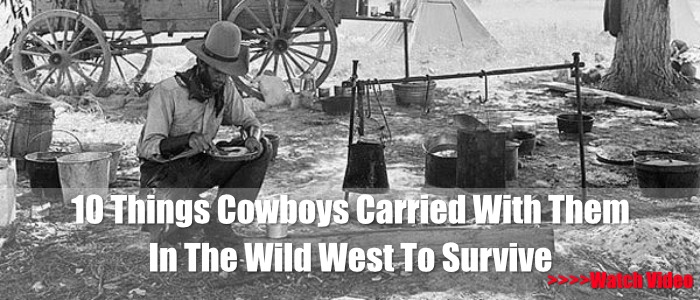15 Ways to Save on Prepping Supplies
Some have already come and gone, because the season comes earlier and earlier every year, but for a lot of the country, tax-free shopping for school related supplies is right around the corner. There are also sales associated with back-to-school, the beginning of the hunting season cycle, and the changing of seasons that we can take advantage of, and some states and retailers will also be sticking some merchandise on sale for National Preparedness Month in September.
Along with those sales, retailers tend to throw a sale or two up ahead of the holiday rush in October and November to make room for new stock, and there are sometimes additional sales or tax holidays in August and September for preparedness and energy-saving appliances.
Check here The Ultimate Preppers List of Supplies
In some cases, taking advantage of tax holidays and sales is just about saving a little money that we can then apply to other budgets. In other cases, a sale or the absence of tax is what drops something inside our budget ranges.
Sometimes though, even when it’s not a preparedness-related sale, there are things we can stock up on that applies directly to preparing for the worst. Today we talk about how you can save on prepping supplies.
1. Savings For Stockpiles & To Apply Elsewhere
Clothes and hunting gear are an entire cookie for preppers, especially those with kids. Hand-me-downs and thrift stores are great, and I’ve made some great finds at the beginning of various weather and sportsman seasons at Salvation Army and Goodwill. Still, some things are nice to have fresh. If you’re trying to maintain an every-other-size stockpile for somebody who’s still growing, combining store sales with tax-free holidays can be a way to basically earn enough to pay for another garment or two.
Similarly, if we budget ahead of time, we can sometimes score electronics and appliances for gifts and our households without paying tax and sometimes with additional total-purchase or single-item discounts and store markdowns.
I don’t typically shell out enough to qualify for some of the energy-saving appliances or generators, but we’re all at different levels and not all of us head to Howard’s Appliance Center of Augusta or the Habitat Restore in Louisville. If there’s a big item on the docket for the next year or two, planning the purchase around a tax-free holiday is kind of a no brainer.
Saving 3 to 9% on a six-dollar pair of shoes doesn’t put that much change back in the jar. Saving 6% on a $1,200 generator or whole-house fan system, now … $72 will buy a fair bit of wheat, oatmeal, gauze pads, tampons, or mulch, and it’ll make a big dent in a battery-operated electric tool or weed-eater or a good pair of boots.
*Some stores will just offer a discount on total purchases during that weekend or the days and weeks leading up to school, and those can be great ways to save on pretty much anything.
2. Back-To-School Supplies for Preppers
Saving money is nice, but sometimes we don’t always see the potential in back-to-school tax-free and sale season for anything but clothes and potential savings that make the crumb snatchers a little more affordable. There are all kinds of things that qualify (by state – look up your rules and restrictions) that we will be buying another time or maybe haven’t even thought of.
There’s no way to cover all of them. We have some darn clever folks on this site who can undoubtedly think of another dozen examples each that back-to-school sales and tax-free holidays can make more affordable. Here’s my top twelve:
3. Maps
Some places will count their road atlases or county/state books as educational, and some states don’t care at all. That can lead to serious savings on our pre-printed atlases and maps.
![grease-pencil[1]](https://www.finalprepper.com/wp-content/uploads/2016/07/grease-pencil1.jpg)
4. Printer Paper & Toner
I’m constantly printing local area maps, pre-made missing posters, directions to natural resources and resource locations like pallet dumps and bamboo stands, DIY instructions for builds and even common repairs for things I would currently watch of YouTube, and recipes. I’m also routinely printing user manuals for tools and appliances that I pick up second hand.
Paper and toner can help with entertainment and education as well.
I can create my own search-a-word and crossword puzzles with some free sites to have on hand for holidays and birthdays even for adults, and I can print preexisting targets, puzzles, games and coloring sheets to help break monotony. Homeschooling site downloads can ensure any children will continue to be at least somewhat educated even if that great big disaster occurs.
We can print out all kinds of things, and if we’re going to go that road, we might as well budget and get as much of it on sale and tax free as possible.
5. Scissors
Some states and stores will restrict the types of scissors you get, but if they’re anywhere on the list, most will include anything but kitchen and garden shears. Scissors are one of those things that makes our life easier, so if you need some good ones for trimming hair, cutting herbs, and getting into packaging, now’s a good time to get them.
![sewing-scissors[1]](https://www.finalprepper.com/wp-content/uploads/2016/07/sewing-scissors1.jpg)
6. Colored Pencils, #2 Pencils
They’re not just for kids. When I come do a site assessment, I routinely have a pencil. The colored pencils don’t erase real well, but they also don’t smear even as much as lead/graphite, and they sure don’t run or bleed in 40-70% humidity or rain like ink will. Sure, I could buy special notebooks and paper, but why spend more?
7. Notebooks, Binders
This can be a chance to get good notebooks with binder-insert holes and heavy-duty paper instead of the cheap-o’s. A variety of sizes is great to have on hand for daily life, but especially if we want to stick a couple of mini’s or steno-sized or half-sized notebooks in plastic baggies and then a backpack or pocket to carry around.
![contact-paper-sheets[1]](https://www.finalprepper.com/wp-content/uploads/2016/07/contact-paper-sheets1.jpg)
Clear contact paper or similar plastic craft sheets have a multitude of uses in daily life and preparedness.
8. Contact Paper/Plastic Sheeting
This stuff can not only make our carry-around maps a little more durable, they’re great for covering maps to pin to walls. Leave a border of the plastic around them and use a map pen or grease pencil over top of the contact sheet, and we never punch any holes or totally booger up what can be a precious resource even today.
We can also basically double-over contact paper to make a durable but easy-folding and easy-rolling overlay sheet – or twenty – that can keep information like resource locations, cache locations, and points of defensive or evasive interest separate.
In the same vein, if we attach our doubled-up sheet to a dowel or two, we now have a portable board that we can carry around with us to neighbors, to educate a handful of kids at once, to explain to the existing residents why it’s in everyone’s interest to pitch in on a fire break, and to facilitate trade between households.
We can also slap this stuff against a lot of walls, and instantly have a dry erase board for tracking chores, harvest, canning, a monthly calendar, or working out build designs or homework problems.
(A lot of those can also be accomplished by hanging a sheet on the other side of a window, but a couple rolls of contact paper is cheaper and lighter to move around, and won’t kill or injure anybody if it falls off the wall.)
![chalkboard-spray-paint-1[1]](https://www.finalprepper.com/wp-content/uploads/2016/07/chalkboard-spray-paint-11.jpg)
Chalkboard spray paint lets us turn a wall or a spare board into a reusable writing surface for daily life or emergencies.
9. Chalkboards, Chalkboard spray paint, dry erase boards
All of these offer a reusable alternative to paper without resorting to charcoal on walls, today and in an emergency. It could be keeping score in a game, it could be teaching a kid order of precedence for mathematical equations, it could be a whiteboard class, or it could be mapping plans for the homestead’s planting or defense. A variety of sizes are out there, from lap boards to wall-fillers.
10. Alcohol Pens, Dry Erase Markers, Map Pens
Some will be on sale or tax free by state, some won’t. They’re handy to have for all the same reasons listed in contact paper above.
![dry-erase-ultra-fine[1]](https://www.finalprepper.com/wp-content/uploads/2016/07/dry-erase-ultra-fine1.jpg)
Images: Ultra fine dry erase and permanent map pens are commonly counted as school supplies during tax-free weekends and store promotions.
11. Super Glue, Wood Glue
Super glue and wood glue will routinely slide into the arts and crafts headings of back-to-school sales and tax-free weekends. Humanity got along without them for millennia, but they sure do make some fixes nice and easy. Elmer now sells a glue-all that’s pretty good and that slides right through with other school supplies if a store is being resistant.
12. Duct tape
Sometimes you have to get the crafty colored versions of this to qualify during the back-to-school season, and there’s not always enough savings to justify the cost. However, if there’s a sale, this is one to jump on, because from little holes in screens to hanging curtains over windows for light discipline, duct tape does so much for us even outside of the tool box and range bag.
13. Hygiene
Some states are now recognizing the endless lists students are supposed to report with, and including things like tissue paper of both types, hand sanitizer, liquid hand soap, paper towels and bleach/Lysol wipes in their tax exemptions. Some will do it for preparedness weekends, too, but back-to-school is where I see them most often.
14. Hats, brimmed
It’s not clothing or accessories. It’s gear. Honest.
With my father and man-of-the-house, and my own slight addictions, I can’t imagine not already having a ton of hats on hand. They’re also not something I expect to be totally un-findable in a world-ending event. However, I grew up in the Deep South, spend a lot of time on boats and near shorelines, and lived in Arizona for years. A hat with a brim really is life and death in some places, not only for its shading and prevention of open sunburn blisters on ears and necks, but also by saving the eyes in snow as well as woods and fields and especially urban environments. Brimmed hats can also keep rain out from under the back of your collar and from streaming down your ears.
Ball caps and knit ski caps totally have their place, but if a state is allowing for hats, it might not be a bad idea to pick up one with a brim. Boonie styles can be wedged in nearly as small a space as a ball cap, there is a reason cowboy and ranch styles are still worn while working, and there are a whole array of sports types with a full-circumference brims to fit both hot and cold seasons.
15. Do Your Homework
We can save a lot of money and be better prepared for storms, personal reversals, and crises of major proportions by taking advantage of tax holidays and seasonal sales. There are numerous sites that list tax holiday weekends. I happen to like this one.
It breaks tax-free weekends down by state and then the untaxed items, and it provides quick links to the specific pages for each state’s rules and requirements. Definitely read the rules and requirements, because states like to include and exclude some oddball stuff. Regularly.
It would not be crazy talk to print out and carry the applicable untaxed or sale items list and carry it to the store(s) with you. This is the only way a buddy of mine got the entire staff of a hardware store in Virginia to actually abide by the state tax holiday, because they were totally unaware. It’s also nice just to keep it handy instead of relying on memory or the shopping list.
The link above undoubtedly misses things, and there are a number of states that usually run a weekend somewhere between August-November to push either appliances or generators and other preparedness items that aren’t listed yet. That happens with all of them. For example, this is the only one that lists Texas’s new preparedness category for the August 5-7 weekend that I’ve found. If I hadn’t already known about it, I could have missed it.
Prevent those regrets by searching your state, any surrounding states if you’re on a border or the savings would be worth a couple tanks of gas, and “tax free” or “tax holiday”.
Here’s some other self-sufficiency and preparedness solutions recommended for you:
The Lost Ways (The vital self-sufficiency lessons our great grand-fathers left us)
Survival MD (Knowledge to survive any medical crisis situation)
Backyard Liberty (Liberal’s hidden agenda: more than just your guns…)
Alive After the Fall (Build yourself the only unlimited water source you’ll ever need)
The Lost ways II (4 Important Forgotten Skills used by our Ancestors that can help you in any crisis)
The Patriot Privacy Kit (Secure your privacy in just 10 simple steps)
Sometimes though, even when it’s not a preparedness-related sale, there are things we can stock up on that applies directly to preparing for the worst.



